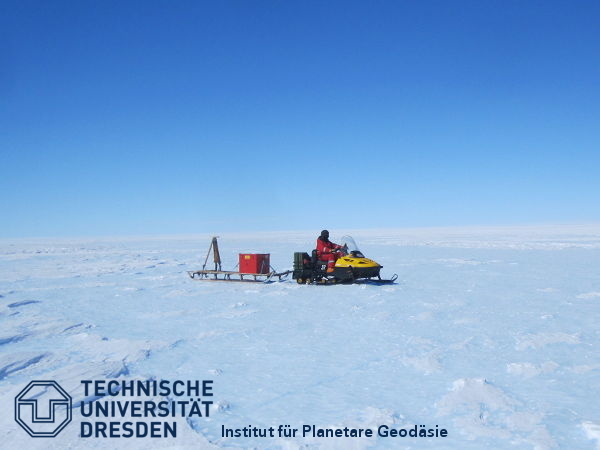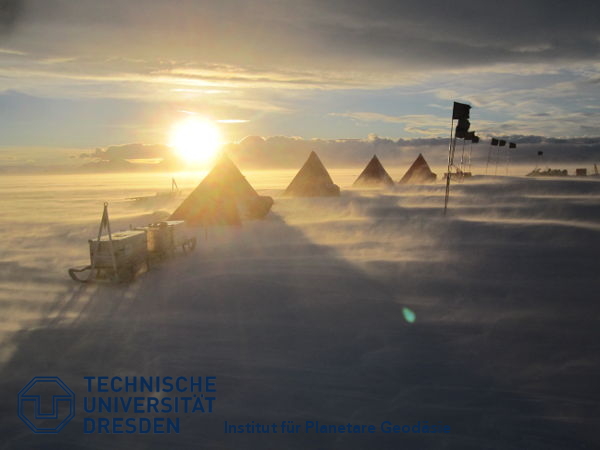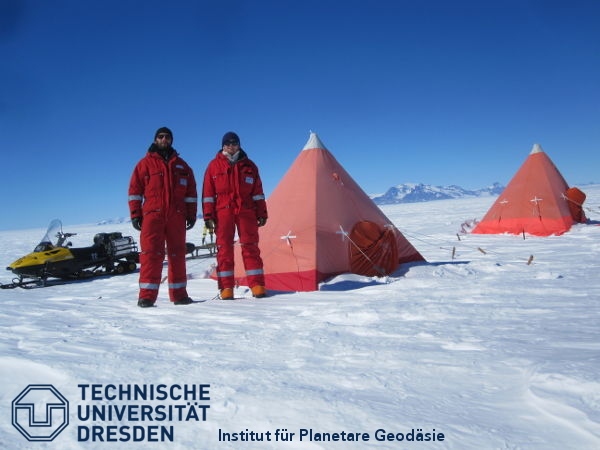In the week from 1–7 December the weather was not that favourable to continue our field work. The daily weather forecast from Neumayer station told us to expect storms with high wind of more than 60 km/h on Tuesday 2 December.
Therefore, we spent some time to prepare our camp accordingly. We had to stay in our tents for several days, using the time to refine the further planning, to check the already recorded data and also to enjoy some rest.
Looking outside, we could see how the wind caused fine snow to drift over the ice. The drifting snow grew
up on the lee side of our tents. Last week being busy digging snow pits to measure the depth of the firn layer, now we’ve had our hands full keeping the entrances of our tents free of snow.
As the storm slowly weakened on Saturday 6 December, the shovel remained our main tool. Fuel drums, gas bottles and especially the snowmobiles had to be cleared of snow. After this strenuous task was done bright sunshine and a light breeze greeted us on Sunday. So, we continued our measurements and drove about 90
km this day, which took us about nine hours.
The great weather continued last week such that we could realise a daily observation programme. Each day we could accomplish about 70–80 km of kinematic profiles in this way. In the evening, having returned to the camp, we had to prepare our equipment for the next day, save the GPS data and prepared dinner. Also, we had our daily contact with Novo Airbase using the satellite phone to communicate the current situation and the plans for the next day.

Driving the snowmobile over blue ice and snow patches hauling a Nansen sledge on which the GNSS antenna is mounted. The red box contains the survival equipment – which has to be carried at all times when we are outside the camp so if the weather deteriorates we can build a bivouac shelter, for example.
On Monday, 8 December, it was not the radio operator of Novo Airbase who answered our call but Veit Helm, our colleague from AWI Bremerhaven. They had taken airborne measurements using the ASIRAS instrument aboard the AWI polar aircraft covering the entire area in two days on 9 and 10 December – while it takes us several weeks to do so.
However, doing the ground-based kinematic measurements we reach a much higher resolution and accuracy, enabling us to use these data to validate the airborne measurements. The set-up of a corner reflector in the working areas was a special issue, and indeed, the pilot succeeded to operate the aircraft in such a way that the flight trajectory struck the corner reflector three times.
Having surveyed the exact position of the reflector it serves as a ground-truth target for ASIRAS. On a tour to Lake Untersee (some 40–50 km further south in the Gruber Mountains) colleagues of Novo Airbase visited us.
They also brought an AWI ground-based radar system which will allow us to measure the firn depths along our kinematic profiles in the coming days.
Post from: Ludwig Schröder and Undine Strößenreuther from TU Dresden in Antarctica as part of ongoing efforts to validate ESA’s CryoSat mission.










Discussion: no comments